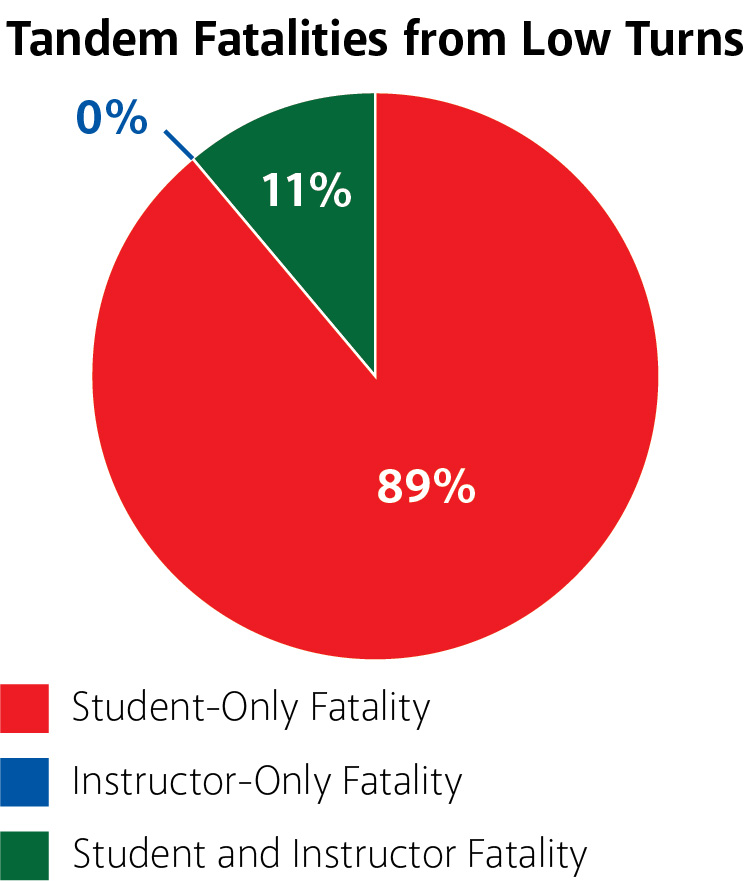Rating Corner | Why Are Tandem Instructors Still Making Low Turns?
Over the last 24 years, 46 tandem skydiving deaths occurred in the United States. Of these, 12—more than a quarter—resulted from landing issues. Three were dust-devil related, but nine directly resulted from turns of more than 90 degrees below 500 feet: Five were planned turns and four were unplanned turns resulting from last-minute decisions by the tandem instructors. This means that low turns caused 75% of the deaths that occurred while tandem parachutes were landing. One of these landing incidents was a double fatality; the rest were single-fatality incidents, and it was the students who suffered the fatal injuries. 
Contrary to popular belief, double tandem fatalities occur less often than single fatalities. The 46 fatalities since 1998—20 instructors and 26 students—occurred during 33 fatal tandem incidents. That means that double fatalities occur only 39% of the time. Students make up 57% of all tandem skydiving fatalities. And when it’s a single-fatality incident, 67% of the time it is the student who dies. This becomes even more thought provoking when you consider that when a fatal incident involves a low turn, the vast majority of the time—89%—it is only the student who dies. In fact, the only time an instructor has died from a low-turn tandem incident is when the landing was so violent that it killed both jumpers.
In 2022, three students died in low-turn tandem incidents. Why is this still happening?
Some tandem instructors make radical turns because they want to have an exciting time under canopy, forgetting that the skydive is for the student and the experience it brings to them. Another subset of the tandem community seems to think that instructors need to generate speed for a safe landing, which could not be farther from the truth. USPA and its tandem examiners have been trying to dispel this myth through constant education during certification courses, safety seminars, online tandem instructor forums and the monthly USPA Professional e-newsletter, but the misinformation persists. The bottom line is that tandem instructors need to do a better job as canopy pilots. They must put safety first and follow all guidelines and standards for tandem skydives and remember that the goal of every tandem jump is to return the student safely to the ground.
USPA and the tandem-equipment manufacturers are committed to enforcing the requirements and encouraging instructors to do the right thing by strictly sanctioning tandem instructors who violate the tandem BSRs, especially the BSR that dictates how instructors perform turns below 500 feet. Every part of the tandem industry needs to hear this message. There must be a paradigm shift in how we conduct tandem skydives, and we need to police ourselves and our community. There must be a concerted effort by everyone from Safety and Training Advisors, senior instructors and DZ staff to make this change. It must be a collective endeavor. We need to be hyper-focused on doing the right thing not only for the safety of our instructor corps but, most importantly, to keep our students safe.
North Central Regional Director Michael Wadkins | D-18691; AFF, IAD, Static-Line and Tandem Examiner
USPA Safety and Training Committee Chair